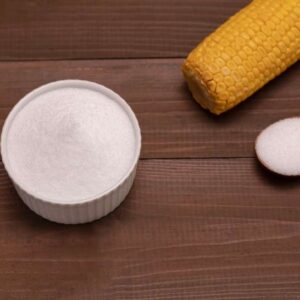
Microplastics’ Hidden Link to Chronic Disease EXPOSED
By now, you’ve heard about microplastics. These tiny fragments of plastic have invaded virtually every corner of our planet.
We’re just beginning to understand the scope of the threat, but we know microplastics pose a serious risk to our health.
If you’re like many folks, you’ve shrugged off those dangers, thinking there’s nothing you can do about them.
I get it—it’s overwhelming constantly hearing about things you have no control over.
But microplastics aren’t one of them.
You can actively reduce your risk and exposure. I’ll explain how.
Research presented at the American College of Cardiology’s Annual Scientific Session (ACC.25) linked microplastic exposure to chronic diseases affecting millions of Americans.
These plastic particles (between 1 nanometer and 5 millimeters across) come from everything from food packaging to building materials to the synthetic clothes you’re likely wearing right now.
This microscopic menace then makes its way into your body through the water you drink, the food you eat, and the air you breathe.
The new study confirmed that microplastics are associated with high blood pressure, diabetes, and stroke.
Even worse, they found evidence of a dose relationship—meaning the more microplastics you’re exposed to, the higher your risk of developing these life-altering conditions.
Before you throw up your hands in despair, remember I said you can do something about microplastics.
Take these simple steps to slash your exposure and your risk:
-
- Ditch the plastic water bottles. Switch to filtered tap water in glass or stainless-steel containers.
-
- Stop heating food in plastic containers. Microwave-safe doesn’t mean microplastic-free.
-
- Invest in a reverse osmosis (RO) water filter. RO filters remove microplastics as small as 0.1 nanometers. One with a carbon pre-filter will remove even more contaminants from your water.
-
- Choose natural fiber clothing (cotton, wool, linen) over synthetic fabrics like polyester and nylon, which shed microplastics with every wash.
-
- Vacuum regularly with a HEPA filter to reduce exposure to plastic particles in your home’s dust.
-
- Avoid ultra-processed, heavily packaged foods—they’re not just bad for your waistline! Choose fresh, whole foods instead.
-
- Use a HEPA air purifier in your home to capture airborne microplastics.
- Stop using plastic items like straws, utensils, and shopping bags. Switch to plastic-free alternatives.
You can’t entirely eliminate microplastics from your life. However, by making these changes, you will significantly reduce your exposure and potentially your risk of developing the chronic diseases associated with them.
The plastic industry has known about these dangers for decades but has continued to promote its products while our bodies have become repositories for its waste.
Every plastic item you refuse to buy or use is one less source of exposure to these dangerous particles.
P.S. Microplastics are a threat to your heart. Here’s what you need to know.
Source:
“Microplastic Concentration, Social, and Environmental Features and Their Association with Chronic Disease Prevalence: An Analysis Across U.S. Census Tracts,” Sunday, March 30, 2025, at 9:00 a.m. CT / 14:00 UTC in Moderated Poster Theater 2. ACC.25, March 29-31, 2025, in Chicago, IL, USA
Written By Dr. Scott Olson, ND
Nearly 25 years ago, failed mainstream medical treatments left Dr. Olson in constant pain – and his health in ruins. And that’s when he did something REVOLUTIONARY. He began his career in medicine – and dedicated his life to uncovering the true, underlying causes of disease.
Through his innovative medical practices in Tennessee and Colorado, Dr. Olson has helped cure countless seniors from across America of arthritis… heart disease… diabetes… and even cancer. All without risky prescription drugs or painful surgeries.
View More Free Articles
A New Reason to Ditch Processed Junk
If you’ve ever walked the inside aisles of your local grocery store and thought, “This is all just junk,” your instincts were spot on. A new study published in the journal Thorax just added another red flag to the list of dangers linked to ultra-processed food—a 41 percent higher risk of lung cancer. That’s right....
When Being Winded on Stairs Is Serious (And When It Isn’t)
I had an athlete visit me recently because he experienced shortness of breath while climbing stairs. He is in great shape, so he was worried about what it might mean. “Doc,” he said, “I run five miles three times a week. Why am I huffing and puffing after two flights of stairs?” His concern is...
Study EXPOSES Hidden Danger Lurking in Your Car
We think of our homes and cars as safe havens. But according to a startling new study, they may be flooding your lungs with microscopic plastic particles—every single day. Researchers in France recently found that adults inhale an average of 68,000 microplastic particles daily from indoor air alone. To put that in perspective, that’s about...
Mailbag: Is Modern Food Making You Snore?
“What can cause snoring, and is there a way to correct this issue?” —Seeking Silence Hi Seeking, Snoring happens when the soft tissues in your throat relax and vibrate as air passes through during sleep. While several factors can cause snoring—from sleep position to nasal congestion—I want to share one trigger that might surprise you....
Simple Food Swap SLASHES Dementia Risk 28%
Let’s be honest… who would jump at the chance to cut their dementia risk by 28 percent. And no, you don’t need to run marathons, survive on broccoli, or learn to play the zither (whatever that is) to make it happen. All it takes is one easy swap—something that’s probably already in your refrigerator. Researchers...
This SMART Floss Exposes Hidden Health Danger
Scientists have created dental floss that doesn’t just clean between your teeth—it also tracks your stress while you’re flossing. Now, I know what you’re thinking… “Great—now even flossing is going to stress me out by telling me how stressed I am.” But this fascinating new tool from Tufts University could be a game-changer for understanding...
Is This "Safe" Sweetener Damaging Your Brain?
The headlines are alarming… “Popular Sugar Substitute Linked to Brain Cell Damage” and “Erythritol Could Damage Critical Brain Barrier” are just two of the dozens I’ve spotted recently. But before you toss every sugar-free product in your pantry, let’s take a closer look at what this study actually shows—and what it doesn’t. The latest research...
This Summer Threat Could SPIKE Your Blood Sugar
Picture this… It’s another scorching hot summer day. You crank up the air conditioning while watching the weather forecast, which predicts yet another “record-breaking” heat wave. It’s starting to feel like just another miserably uncomfortable summer. But what you might not realize is that—if you have diabetes—those rising temps could do far more damage to...
Move Over Yogurt—5 Foods That Pack MORE Probiotics
Let’s talk about your gut. The microbiome is the collection of trillions of bacteria and other tiny organisms that live in and on your body—especially in your gut—and help keep you healthy. I’ve written often about how vital it is to maintain a healthy microbiome. And you might have dutifully added yogurt to your shopping...
Is Your Heart Older Than YOU?
Maybe you feel young for your age. Good energy, decent sleep, eating your veggies. But what if I told you your heart might be a decade older than the rest of you? That’s exactly what researchers at Northwestern University found in a new study published in JAMA Cardiology. The average American woman’s heart is about...









